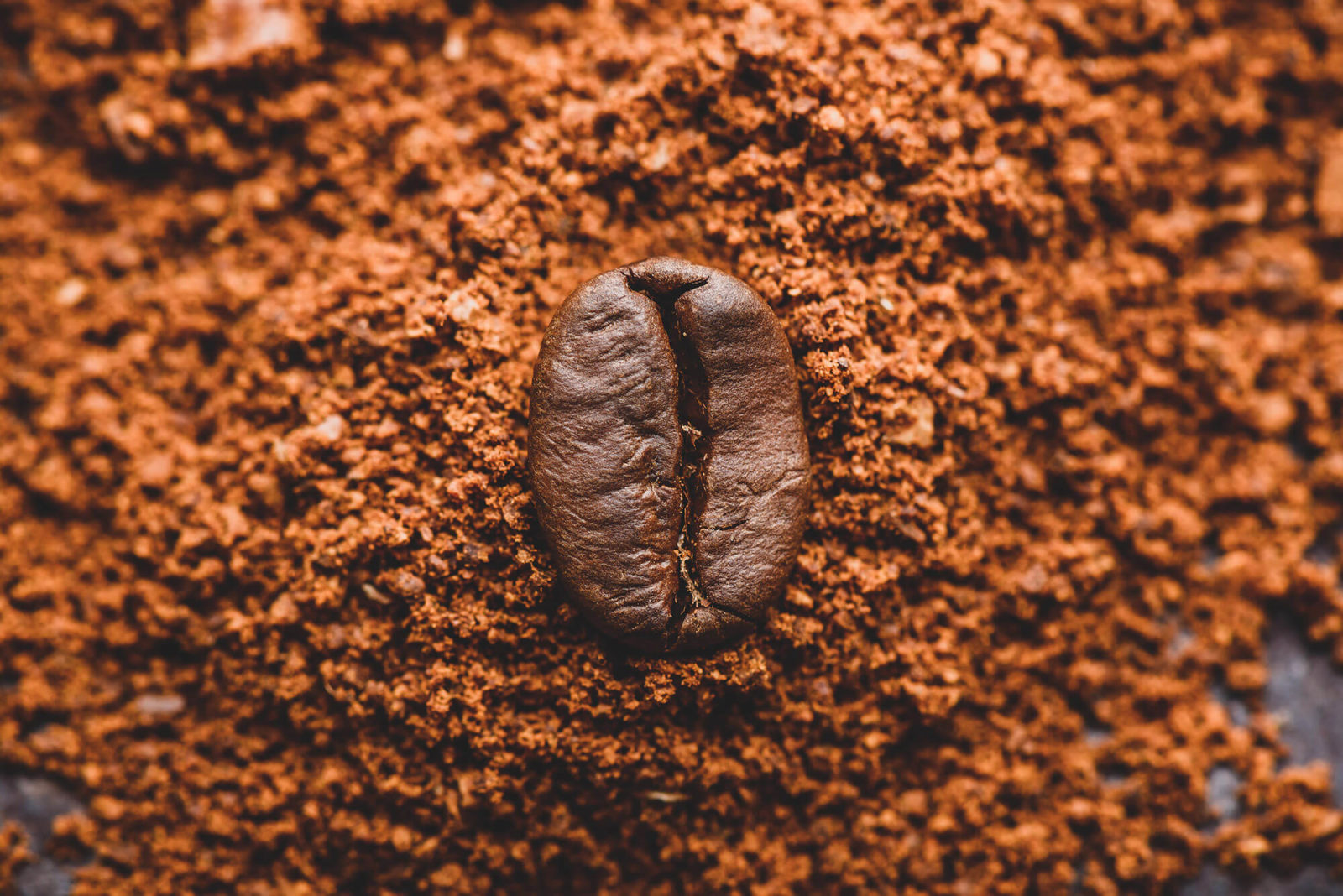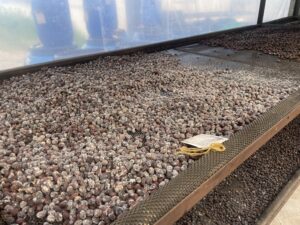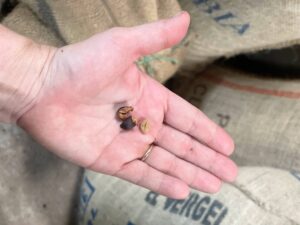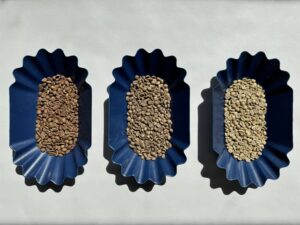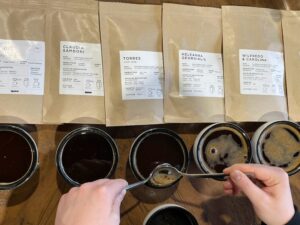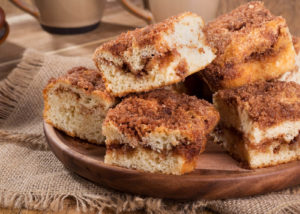Them: “Meh. This bag of coffee just didn’t really do anything for me”.
Us: “How are you grinding the beans? You’re using a French Press? Try using a coarser grind. It should look similar to sea salt when you steep it.”
Them: “You were right, I LOVED the beans. The tasting notes were *chef’s kiss*. I think this coffee is my new favourite!”
If we had a dollar for every time someone told us they didn’t like a certain coffee that perfectly fit their preferred tasting profile, only to find out that they hadn’t been grinding the beans properly for their brewing method, we’d have…well. We’d have some dollars.
Taking the time to grind your coffee beans correctly will transform your coffee experience. Your coffee will be more flavorful and delicious. Assuming you’re starting with high-quality beans, you’ll be able to determine your coffee’s flavor and strength and taste those chocolate and berry notes we’re always going on about. You’ll be able to brew coffee that rivals your favorite coffee shop (even us, at Square One!).
Why does grind matter?
The easiest, fastest way to up your coffee-making game is to pay attention to how you’re grinding your coffee. Finding the right balance between your preferred brewing method and ground will help you get the best out of your premium Doorstep Barista beans and elevate those tasting notes.
The size of your grind can make all the difference in your morning brew and dramatically change the taste of your coffee. Grind your beans too fine for your brewing method and you could wind up with an over-extracted, bitter mess. Too coarse, and you’re stuck with a weak, tasteless cup of bean water. Get it just right, and….bliss.

Grinding Machines for Your Home
There are three main types of grinders that work well for the home barista.
- Blade grinders. This is the most common home coffee grinder, and they’re easy to find at any store that carries basic kitchen equipment. With a simple blade and a few speed settings, blade grinders are best for coarse to medium grinds. Cons: their limited speed settings and single blade doesn’t always deliver consistent results.
- Electric Burr grinders. Preferred by many at-home coffee aficionados, these electric grinders use 2 sets of burrs to cut the coffee to the size you tell it too. This will make the grind size more consistent and allow for even extraction.
- Hand grinders. Great for gourmet coffee on-the-go and power outages. Hand grinders are an awesome introduction to burr grinders. They will give you a more consistent grind than the blade grinders. They are also cheaper and more accessible than an electric burr grinder, and are a great option.
If you’re REALLY serious about your coffee grinds, you may want to consider a flat burr grinder–these are the professional-grade grinders you see at your local cafe, and they come with a price tag to match. The conical shape they’re named for, coupled with multiple speed settings give you the most accurate grind sizes and textures.

Pair Your Grind With Your Favourite Brewing Methods
NOW we pair the right size coffee grounds with your preferred brewing method.
As a general rule of thumb, the longer the water is in contact with the coffee while brewing, the coarser you want your grind to be.

Turkish coffee is made by combining extra finely ground coffee with sugar, water, and spices and boiling in a small pot. Served unfiltered, an extra-fine grind size, similar to powdered sugar, is needed to prevent your drink from being gritty.
Espresso is brewed by forcing water through tightly-compacted coffee grounds. Since contact time with the beans is very short, espresso requires an extra fine to fine grind size.
French presses are an immersion-type brewer; water is poured over the coffee grounds and steeped for several minutes before straining. For this method of brewing, a coarse grind setting works best.
AeroPress is similar to a French press in design and use. The recommended grind size is between medium and fine, depending on how long you choose to steep your beans. The longer you steep the coffee, the coarser a grind you want.
Pour-over brewers can vary depending on the flow of water, though most pour-over methods work best with a medium to medium-fine grind.
A single-cup coffee maker, such as a Keurig or Verismo machine, is a drip brewer method, similar to the commercial drip brewers found in cafes. The contact time is fairly low, meaning it calls for a medium to medium-fine grind size, comparable to that of table salt.
Drip coffee is what you typically get from a cafe or coffee shop and drip coffee makers are found in many North American homes. The water flows through a small hole in the bottom of the brewing basket, making medium-coarse to medium ground beans the perfect size. Be sure to experiment to find the perfect ground size for your specific coffee machine and unique taste.
Cold Brew typically takes between 12-24 hours. With the lower temperature, extraction takes longer, so a coarse or extra coarse grind works great. Plus, it’s easier to filter. You can use a finer grind size, just be sure to decrease the steep time to keep the flavour from getting too bitter.

How To Grind Coffee Beans at Home Without a Grinder
If you’d like to try experimenting with coffee grinds but don’t want to invest in a grinder just yet, you have a few options to test and taste different grinds with tools you already have at home.
Get us to grind the beans for you! If you’re a Doorstep Barista subscriber and you’re local in the Edmonton area, stop in to either of our cafe’s and we’ll be happy to grind your beans fresh for you–to your specifications–in store. And if you’re out of town, try your local cafe. A lot of times they will be more than happy to grind your coffee for you (just make sure to buy a couple things during your visit).
We hope this helps! If you have any questions about how to grind your beans, message us on Instagram or send us an email at hello@doorstepbarista.com.

